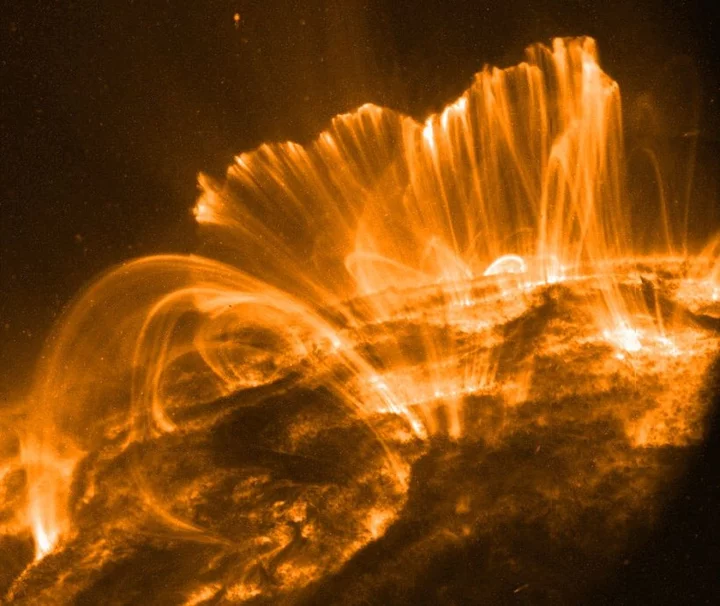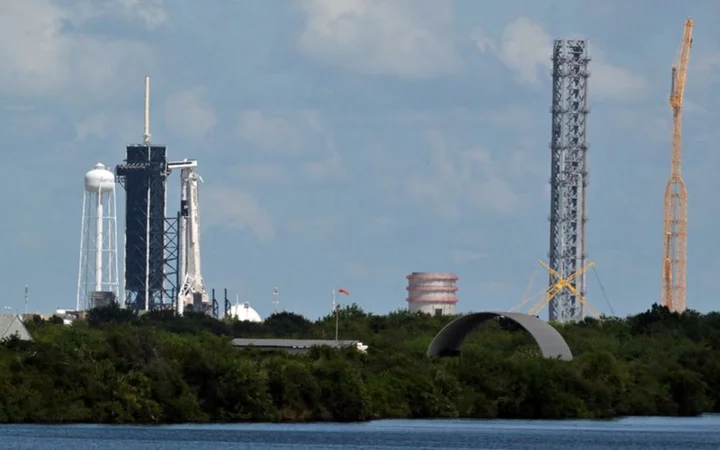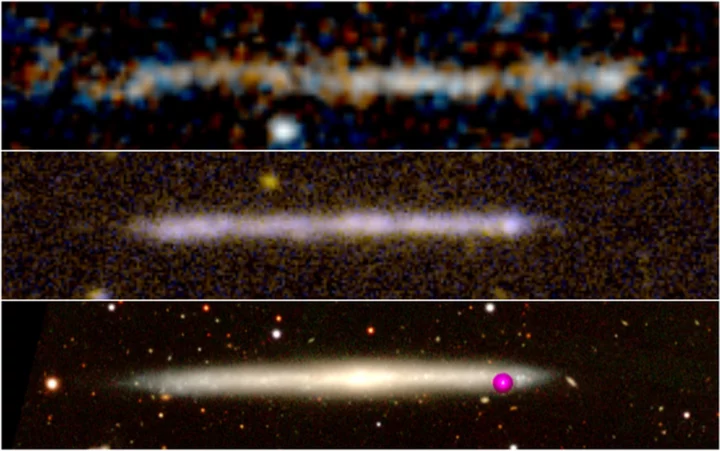
Nasa’s new AI gives ‘30 minutes of advance warning’ before killer solar superstorms strike Earth
Nasa has built an artificial intelligence model to predict where on Earth an impending solar storm would strike, a new system that scientists said can provide “30 minutes of advance warning”. The AI model analyses Nasa satellite data to raise the alarm on dangerous space weather, said researchers from the American space agency’s Goddard Space Center. The warning may provide just enough time for countries to prevent severe impacts of these storms on power grids and other critical infrastructure, according to the new study published recently in the journal Space Weather. Solar storms are caused when the Sun emits a burst of electrically charged plasma in what is called a coronal mass ejection. These charged particles create so-called geomagnetic storms that may cause blackouts and technological malfunctions of instruments on Earth as they interfere with the protective magnetic field around the planet. While these storms range from mild to extreme, their effects could become increasingly disruptive in a technologically dependent world. For instance, a solar storm in 1989 caused blackouts across Quebec, Canada for 12 hours, plunging millions into the dark and closing schools and businesses. Another popular solar superstorm event known as the Carrington Event sparked fires at early telegraph stations in 1859 that prevented messages from being sent. Scientists warned that the risk of such a devastating solar storm is increasing as we approach the next “solar maximum” – a peak in the Sun’s 11-year activity cycle. To prevent such a devastation, Nasa scientists developed the new AI model to identify links between solar wind measurements from previous Sun missions and geomagnetic disturbances observed at ground stations across Earth. The computer model they developed, called DAGGER, can quickly and accurately predict geomagnetic disturbances worldwide, “30 minutes before they occur,” researchers said. When they tested the model against two geomagnetic storms that happened in August 2011 and March 2015, it was able to “quickly and accurately” forecast the storm’s impacts around the world. The new prediction system is the first to combine swift analysis of AI, with real measurements from space and across Earth to generate frequently updated predictions. Scientists believe the early warning provided by the system can help take action to protect infrastructure from an impending solar storm, such as temporarily taking sensitive systems offline or moving satellites to different orbits. Read More Stunning aurora lights up skies over Australia: ‘Brightest one I’ve ever seen’ How a severe solar storm could leave a lasting impact on our world The world is not yet ready to overcome a once-in-a-century solar superstorm, warn scientists Astronomers find ‘objects that no one has ever seen before’ Saturn’s rings are no more than 400 million years old – study Strange sounds recorded by balloons in stratosphere leave scientists puzzled
2023-05-15 13:21

Sleeping will be one of the challenges for astronauts on Mars missions
Astronauts have been adjusting to the challenges of sleeping in space for years, including light exposure and zero gravity. The lessons learned from their experiences could help ensure that the first crewed missions to Mars get enough rest.
2023-05-12 21:53

Biggest explosion ever seen spotted in space – and scientists don’t know what it is
The biggest explosion ever seen has been spotted in space – and scientists don’t know for sure where it came from. The blast was brighter than almost anything ever seen and has been going on for years, making it by far the most powerful such event witnessed by scientists. It has been ongoing for more than three years, and took place nearly 8 billion years away. Astronomers have proposed a host of possible explanations for the blast: it may be a vast cloud of gas that was torn apart by a black hole, for instance. But nothing on such a scale has ever been seen before and the explosion may have come from something else entirely. It is more than 10 times brighter than any known supernova and three times brighter than the brightest tidal disruption event, where a star falls into a supermassive black hole. The explosion, known as AT2021lwx, took place when the universe was around six billion years old, and is still being detected by a network of telescopes. The astronomers, led by the University of Southampton, believe the explosion is a result of a vast cloud of gas, possibly thousands of times larger than our sun, that has been violently disrupted by a supermassive black hole. Fragments of the cloud would be swallowed up, sending shockwaves through its remnants, as well as into a large dusty “doughnut” surrounding the black hole. Such events are very rare and nothing on this scale has been witnessed before, the researchers say. Last year, astronomers witnessed the brightest explosion on record – a gamma-ray burst known as GRB 221009A. Although this was brighter than AT2021lwx, it lasted for just a fraction of the time, meaning the overall energy released by the AT2021lwx explosion was far greater. AT2021lwx was first detected in 2020 by the Zwicky Transient Facility in California, and subsequently picked up by the Asteroid Terrestrial-impact Last Alert System (ATLAS) based in Hawaii. But until now the scale of the explosion had been unknown. Dr Philip Wiseman, research fellow at the University of Southampton, who led the research, said: “We came upon this by chance, as it was flagged by our search algorithm when we were searching for a type of supernova. “Most supernovae and tidal disruption events only last for a couple of months before fading away. For something to be bright for two plus years was immediately very unusual.” The Southampton-led team believe the most feasible explanation for what caused the explosion is an extremely large cloud of gas (mostly hydrogen) or dust that has come off course from its orbit around the black hole and been sent flying in. Dr Wiseman added: “With new facilities, like the Vera Rubin Observatory’s Legacy Survey of Space and Time, coming online in the next few years, we are hoping to discover more events like this and learn more about them. “It could be that these events, although extremely rare, are so energetic that they are key processes to how the centres of galaxies change over time.” The findings are published in Monthly Notices of the Royal Astronomical Society. Additional reporting by agencies Read More Biggest explosion ever seen spotted in space – and we don’t know what it is Scientists think they have explained a ‘mysterious structure in the universe’ Astronomers spot the largest cosmic explosion ever seen Astronomers spot the largest cosmic explosion ever seen Astronomers see ‘objects that no one has ever seen before’ in incredible observations ‘Meteorite? shooting star? missile?’: Officials explain strange ‘fireball’ over Japan
2023-05-12 12:54

Space startup partners with SpaceX to launch commercial space station
By Joey Roulette WASHINGTON Vast, a startup backed by cryptocurrency billionaire Jed McCaleb, is aiming to launch a
2023-05-11 21:29

‘Runaway supermassive black hole’ mystery solved: Scientists find new explanation for unusual star structure
Scientists think they have found an explanation for what scientists thought was a “runaway” black hole speeding through the universe. Last month, scientists reported that they had seen what appeared to be an object unlike anything seen before. What originally appeared to be scratches on Hubble images was actually a black hole that had been thrown out from its home galaxy and was now speeding through the cosmos, scientists said. Astronomers had come to that conclusion after spotting a long trail of stars, formed 8 billion years ago. It was a stretched out, narrow shape, roughly the same size as our own Milky Way. Last month’s study suggested that those stars were the wake left behind from that runaway black hole. As the black hole travelled through a gas cloud, it left behind the right conditions to start forming stars, that study suggested. It was shock and a breakthrough for a number of reasons: it was unprecedented, and required a number of different conditions for it to be true. That led astronomers both to celebrate and question the theory, and in the time since other researchers have been working on their own ideas. Now scientists at the Instituto de Astrofísica de Canarias (IAC) have suggested their own, more ordinary explanation of the unusual, long star structure. They suggest that it is in fact just a flat or thin galaxy – one without a bulge that makes it wider – that is being seen from its side. “The motions, the size, and the quantity of stars fits what has been seen in galaxies within the local universe,” said Jorge Sanchez Almeida, an IAC researcher who is the first author of the article, in a statement. “It’s a relief to have found the solution to this mystery, the new proposed scenario is much simpler. In one sense it is also a pity, because the existence of fleeing black holes is expected, and this could have been the first one to be observed.” The team compared the mystery structure with another, much better known galaxy, named IC5249. That is near to us, has a similar mass of stars, and doesn’t have a galaxy either. They found that it was surprisingly similar. The stars were moving in similar ways to those found in closer, comparative galaxies, researchers said. That led scientists working on the new paper to suggest that it is a relatively normal and expected galaxy, rather than an out-of-control black hole. But they hope that further observations will shed further light on what exactly it is doing – and could still allow the galaxy to prove of interest to astronomers. “We also looked at the relation between the mass of the assumed galaxy and its maximum velocity of rotation, and discovered that indeed it is a galaxy which behaves like a galaxy,” said Ignacio Trujillo, an IAC researcher who worked on the study. “It is an interesting object, because it is quite a large galaxy at a very large distance from Earth, where the majority of the galaxies are smaller.” The proposal is reported in a paper, ‘Supermassive black hole wake or bulgeless edge-on galaxy?’, published in the journal Astronomy and Astrophysics. Read More Aliens may intercept human communication ‘within next 100 years’, study says Powerful auroras likely this week due to rare ‘backward’ sunspot Meteorite crashes through roof of New Jersey home Aliens may intercept human communication ‘within next 100 years’, study says Powerful auroras likely this week due to rare ‘backward’ sunspot Meteorite crashes through roof of New Jersey home
2023-05-10 21:45

Webb telescope spots three debris belts around luminous star Fomalhaut
By Will Dunham WASHINGTON There has been plenty of excitement in recent decades about planets detected orbiting various
2023-05-09 04:24
